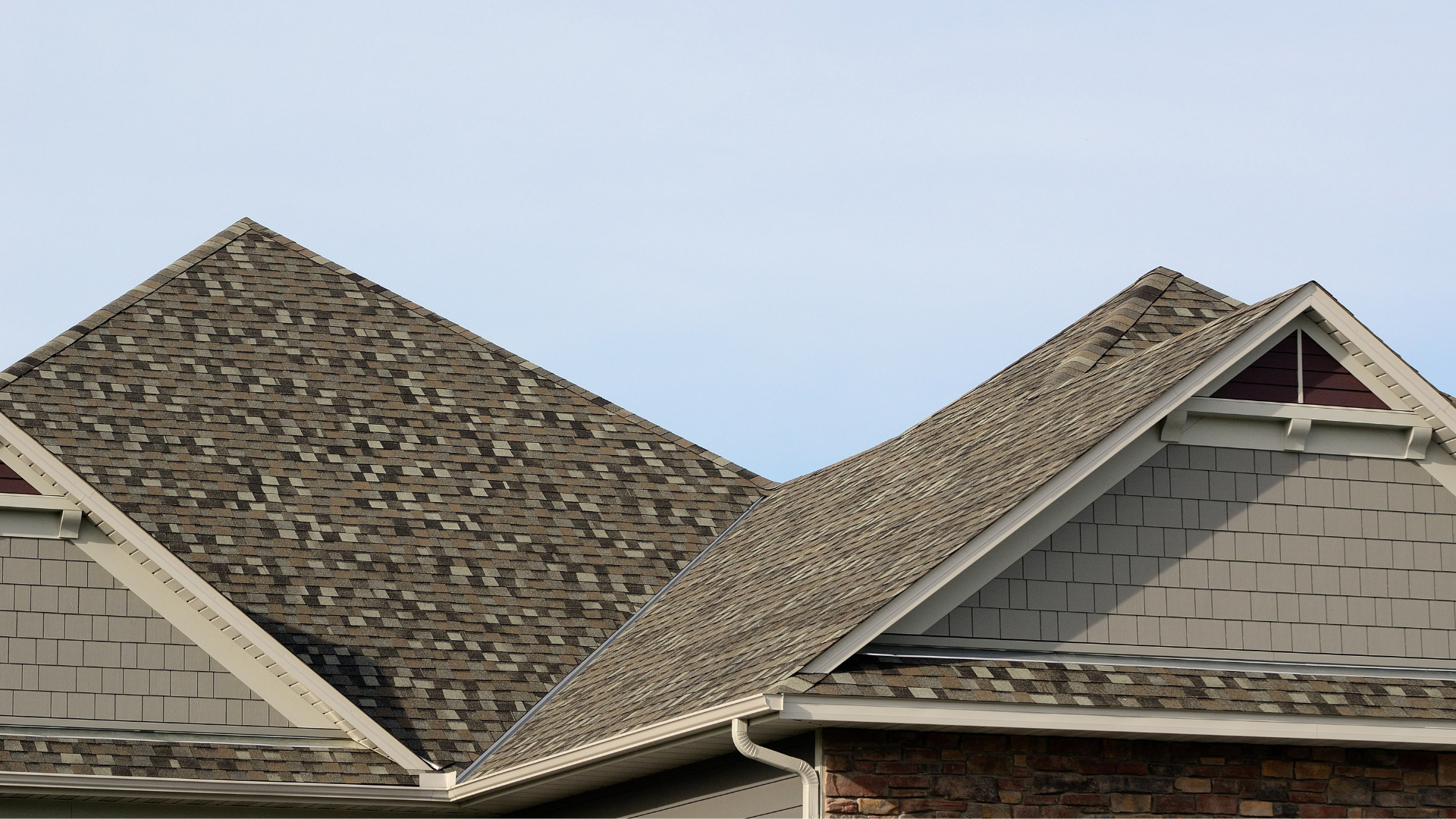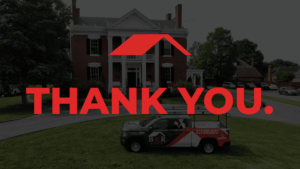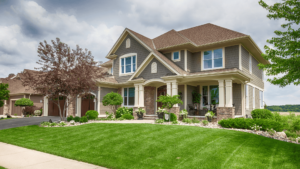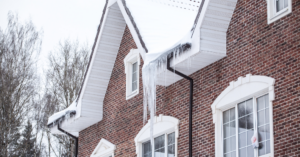American houses tend to have three basic roof styles: Gabled, Flat, or Hip. Many houses have a combination of roof styles, such as a flat roof on an addition with a gabled roof or gabled dormers on a hip roof.
In this article, our Best Choice Roofing team will share our in-depth knowledge about the hip roof, what it is, and the best shingles for hip roof replacement.
What is the Difference Between a Hip Style and a Gabled Roof?
Hip style roofs have four sides with a pointed peak at the top, while the gabled roof has two sides meeting at the top without a “peak.” The gabled roof has a triangular shape where the two sides meet, while the hip style roof creates a pyramid.
Hip style roofs were typical in Southern plantation architecture in the 18th and 19th centuries. However, by the 1950s, the style spread across the U.S. and was the roof of choice for homes such as ranch-style and bungalows. They were popular in the south because the hip roof’s structure stood up to heavy winds, tropical storms, and hurricanes. As a result, they are also popular in areas of the country known for high winds and tornadoes. Their pitch and structure are also well-suited to create better runoff for rainy areas and can also withstand the weight of heavy snowfall.
What are the Pros and Cons of a Hip Style Roof?
Here are the pros and cons of hip style roofs:
Pros
Homeowners and builders choose hip style roofs because they offer many advantages over other roof styles, including:
- They withstand high winds and hurricanes
- The exterior walls are all the same height
- The roof creates a continuous eave for a single gutter system to improve water drainage
- They withstand the weight of snow
- They create more texture with several angles to view the roofing materials
- It tends to be considered the more attractive roof compared to gabled or flat roofs
Cons
As with any roof style, hip style roofs also have some cons:
- Their complex design is more difficult to build and requires more materials, so they cost more to construct and maintain
- They can make it more difficult to ventilate the attic
- The four sloped sides take up attic space
- They can be prone to leaks if you don’t use the right roofing materials
- More seams mean more potential damage and leaks
Why Homeowners and Architects Love Hip Style Roofs
Hip style roofs are considered the gold standard of roofing, providing a more attractive design for added curb appeal. They can be designed with the traditional four sides or be far more intricate with additional features such as dormers. They not only look good but also offer a sturdier roof thanks to the “hips” and inward slope on all four sides.
These features provide stability against high winds and help precipitation travel to the eaves and gutters more effectively. The four sides also provide a sturdier structure to withstand the weight of snow. The hip roof system also prevents standing water on the roof to help prevent damage and leaks.
How to Choose the Best Material for Hip Style Roofs
Hip roof materials tend to work best when they aren’t too heavy. Unfortunately, the steeper the pitch of the hip roof, the more difficult it becomes to install heavier roofing materials such as slate or clay barrels. As a result, asphalt is one of the most popular choices for hip style roofs.
Here are a few pointers from our expert team to help you choose the best material for your hip style roof:
Asphalt Shingles
Asphalt shingles are the most popular choice for residential roofs because they are durable, versatile, easy to install, and attractive. From an aesthetic perspective, asphalt allows you to create the look you love with a broader range of colors and styles available. Because of the different types, you can choose the amount of texture you prefer, while easily finding a roof option suited to your budget. Asphalt shingles are ideal for hip style roofs because they are:
- Durable: A well-maintained asphalt shingle roof will last up to 50 years, depending on your climate.
- Stylish: You can use asphalt shingles with any home style, with a wide assortment of colors and textures available. They are ideal with hip-style roofs and are commonly used for historic homes yet work well on all different architectural designs and eras. Again, this is because of their highly versatile look.
- Compatible: Asphalt shingles are ideal for almost all roof slopes, including what you’ll find on hip roofs. As long as the slope isn’t under 2:12, it is the perfect choice for hip roofs.
Slate
Slate is a heavy-duty, natural tile choice offering durability and resistance to most weather as well as fire. It is pricier but offers one of the longest lives of all roofing materials. Here’s how they fare as hip style roofs:
- Durability: Slate roofs will last up to a century or more when well-maintained.
- Style: Slate is ideal for historic homes, especially those with Colonial or “chateau” designs. However, they are also a popular choice for upscale homes.
- Compatibility: Steeper roof slopes tend to be best for slate. Therefore, they are not the best choice for hip roofs. While asphalt is not suited to roof slopes below 2:12, slate is unsuitable for roofs below 4:12 as it won’t allow water to shed properly. If you have your heart set on slate, you can choose synthetic slate looks such as black and charcoal textured asphalt shingles.
Metal
Metal roofing is another highly durable, fireproof material that contributes to energy savings as it stays cool in the summer. It is also surprisingly lightweight, considering its ability to withstand high winds and manage heavy snowfall. The look is not suited to all architectural designs, despite coming in a wide range of colors and styles. When it comes to hip style roofs, metal is:
- Durable: As with asphalt, you can get up to 50 years or more from a well-maintained metal roof.
- Stylish: Metal comes in many colors and styles, such as standing seam and corrugated. Modern metal designs also mimic different types of shingle styles, which is the better choice for a wider variety of architectural designs.
- Compatibility: Metal roofing works best on hip style roofs when installed with standing seams where the vertical panels run the full length of the roof. However, this is a very specific look not suited to all homes.
Asphalt Shingles Work Perfectly for Hip Style Roofs
Overall, asphalt shingles are the better choice for hip style roofs, offering versatility, durability, and options to suit any budget. At Best Choice Roofing, we only install high-quality Owens Corning asphalt shingles. Contact us today for a free consultation!
